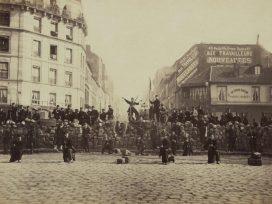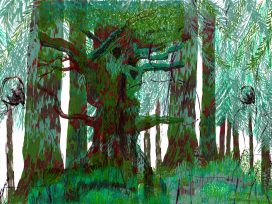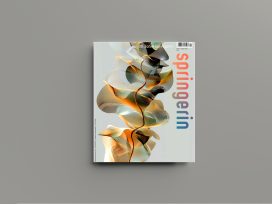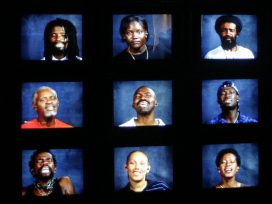In recent years, in political and humanitarian circles, it has been increasingly repeated that the geopolitical situation in the world – both globally and locally – has changed dramatically. Here not only physical changes are meant: the relevance of the humanistic values formed by policy makers and humanitarians in the second half of the twentieth century is thrown into doubt. The question is more and more frequently posed as to how one can dwell in the midst of what is happening nowadays and which words one can use to describe current affairs. How can we outline those tactics (especially intellectual ones) which we may use to resist this “new” situation?
Space: Why resist, for what reasons?
Andrei Liankevich: When I first heard about the topic of our discussion, I immediately thought that I had to speak about two aspects of myself. One of them is me as an artist. Some time ago I realized that I had no idea about what it means – to represent Belarus. How can I represent some space which I absolutely do not identify with? One businessman who sometimes provides us with support once told me that in general people like me are tumours on the body of a normal healthy society. Joking aside, but I have never had a solo exhibition in any state museum in Belarus, I have never submitted an application to participate in the Biennale, understanding that the concept I can offer in no way fits into what this country is, the concept of how this country positions itself. Neither would I be able to fully present myself through my projects, because state institutions have their limitations. And sometimes – now I am turning to the other aspect of myself as organizer of the Month of Photography in Minsk – directors of institutes, as soon as they hear my name, show they have no intention of dealing with me.
But I have a firm understanding of the need to act here, to work and to influence the processes in this country, so I have recently joined CECH art-space. And when, in my role as curator of the Month of Photography in Minsk, the whole institution depends on you, the rules of the game change. Since either you start an all-out war and obviously lose it, or you start to cooperate. Certainly, this is collaboration in its pure form, a sort of betrayal of your own class, but at the same time it is due to this collaboration that the next Month of Photography in Minsk becomes possible. So we should try to integrate major efforts into certain projects, because no one has money, sponsors, grants that could be obtained, and legally spent with a cool project as a result. And thus, I support the strategy of cooperation and shaking hands with people with whom as an artist I would be unlikely to communicate.
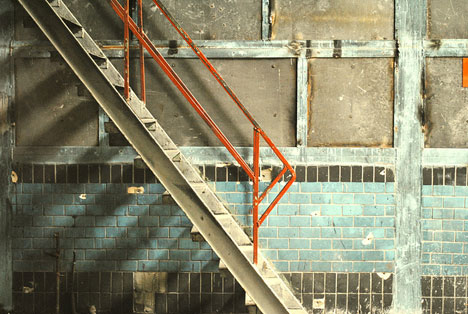
Photo: Lushes Hunt. Source: Flickr
Alaksandr Sarna: If we talk about the importance of resistance in contemporary art in our situation, the position of resistance seems obvious and natural for the artist. On the one hand, it is resistance to a set of official bans, ideological prejudices and the stereotypic perceptions of officials who are unable adequately to assess the relevance of contemporary art projects. On the other hand, it is resistance to conformity, not only that shown by mass audiences (the public is not always ready to accept radical projects), but also the conformity of those artists who view self-realization and self-expression as their only goals, with a certain “blindness” and indifference towards what is happening around them. Unfortunately, most Belarusian painters, sculptors, photographers, theatrical figures and so on can be found within this category of people. And to my mind what they create can not be considered contemporary art, because it in no way has something to do with reality. It is this trend which dominates here – self-expression is welcome, where critical issues are avoided, and problematic topics not dealt with.
Cases of artistic resistance (especially in the political aspect) can be counted on the fingers of one hand. This is partly because of a hostile political environment, but more so because of global changes, as I see it. Due to the crisis-ridden financial situation, matters have become worse in the world and it has become much more difficult to find support from abroad to carry out significant art projects in Belarus. For example, the legendary festival “Navinki”, which has been held annually in Minsk for 16 years, did not take place this year due to the lack of funds. This case shows that it is necessary to change tactics and strategies both on the local and global levels – in order not to rely exclusively on financial support from abroad, on searching for sponsors and patrons, on foreign foundations or Belarusian government agencies. I believe that the way out can be found in the active support of the community. We must invite people who are interested in participation, those who are willing to hold events by mobilizing their own resources. Sure, it will be good to have some external support, but first of all you need to count on the support of the community; now, for us, this is the most important thing.
Iryna Hierasimovic: In relation to this I thought about the manifestation of this very new element we can feel in the world. I think that now more than ever it has become obvious that the world is quite a heterogeneous structure in which very few homogeneous blocks can be discovered, now we feel that everything is in motion. It is scary, how this movement manifests itself is really scary, in some sense it is just chaos. Since, for example, we need to get used to the word “war” in reference to Ukraine. During my stay in Kyiv, just getting used to pronouncing this word was a real challenge. We are suddenly surprised to find that in our environment there are people who are in quite a literal sense xenophobes. Here in Belarus, they suddenly start to boil over at the Islamization of Europe. You observe people who in some critical, unstable situations begin gladly to fall back into such a flimsy category as “the national”. They begin to operate on the basis of national categories and try to find some support in something that does not present any support at all. “The national” may seem temporarily to offer such support, but this support is absolutely weak, it falls to pieces, when a person faces existential questions about his/her own position in the world.
And I think that these attempts to hold on to some general categories – no matter whether they are national, religious, gender-specific, etc. – are harmful, sometimes even dangerous. They are harmful because they hide the secret depths of human potential, and dangerous because, for example, when today people begin to think in terms of hatred towards the Russians I get scared, because hatred can accumulate and at some point will explode. When people speak about the rejection of Islam, it will also explode at some point. These are some reasons why, to my mind, it is worth resisting – resist falling into some general categories. In this sense, the function of art today – visual arts, cinema, literature, etc. – does not differ from its original purpose, that is to give voice to individuals above any categories, putting him/her in the spotlight.
People who previously had no voice in the public space then make their voice heard and become visible. And when we start seeing the face, then a person, and then one more, etc., it is difficult to think using unchangeable, “frozen” categories.
I really liked the formula that Lukas Barfuss presented in his speech at the literary festival in Solothurn. He identified a writer as a person who gives voice to the absent. Then he listed these absentees – from the migrants in western Europe to the dead or those not yet born and thus having no voices. And that is what I personally expect from art and why it is very important to me. I believe art to be primary for society: it is the artist who helps to create polyphony, and then the number of dangerous, rigid categories decreases significantly.
Anna Medvedeva: To continue on the topic of resistance, I would like to say a few words about some projects as examples of resistance in numerous aspects and dimensions. For example, resistance to the social situation, to digitalization, to the rules of the world of contemporary art, resistance to bureaucracy and even the Ministry of Culture of Ukraine, resistance to so many things that are not necessarily associated with politics. The first project I am going to tell you about is #onvacation. At some point, we began to notice that the annexation of the Crimea and the occupation of Donbass were quietly disappearing from the information flow and falling by the wayside. It was just before the opening of the Venice Biennale, and we decided to make the following project. We started it during the Biennale’s opening days, when a large number of tourists and representatives of the art elite come to the city.
So we had uniforms with no clear identification signs – a reference to the little green men who occupied Crimea in 2014. As we all know, they used to react to the question “What are you doing here?” by saying something like: “We are on holiday”. This provided our project with its name and the hashtag, which was placed on bags and the backs of jackets. The team and volunteers were standing at the entrance to Giardini and Arsenale, as well as in the streets of Venice and offered passers-by the uniforms so that they could photograph themselves inside a pavilion of any country they considered to be aggressive. Many people asked why we were wearing those uniforms, and when we told them the story about the Crimea, many understood it at once. Someone even told us an anecdote about Russian tourists travelling abroad who were asked the question: “Is it an occupation?” The tourists answered: “No, we are just on a visit” or “We are on vacation”. For the whole month we saw different people take uniforms, head towards pavilions of different countries, and then upload their selfies in uniforms onto the site. Our team had a timetable where it was indicated how and where we were working, as well as the amount of time spent inside the pavilion that we considered to be most popular for us – the Russian one. Part of that pavilion was in bright red and green colours, which became a perfect background for our performance. This art action became our provocation, a proposal to return to the subject-matter of occupation, in principle, also a call not to forget about what happened.
Many visitors took the uniforms and went to the pavilions of Israel, Azerbaijan, the United States, Armenia, Serbia, and others. There were even citizens who were headed to the pavilion of their own states, considering them to be aggressive. I also need to mention one aspect that prefaced the story. Just before the Biennale, the Foundation received an invitation to become the national pavilion’s commissioner from the Ministry of Culture of Ukraine. During the negotiations, we failed to develop a common understanding of the project’s concept and we refused the invitation. The system was not ready for the format we intended to offer, so our project #onvacation can also be seen as resistance to the existing bureaucracy, which is not ready to change, not ready for alternatives. To briefly speak about other projects of ours, one of our areas is resistance to digitalization. That is, resistance to the world where there is a lot of information, where modern people live mostly on the Internet. We have forgotten the smell of paint when you work in a furniture shop, we have forgotten what live communication is, that we can develop not only digital art forms, but also drawing. So we recently opened a creative space “” – an infrastructure with workshops where everything can be done with your own hands – there are engraving and furniture workshops, a digital art lab, “”, etc. During the opening, when people came just to have a look at the opportunities and resources they can use, it became clear how quickly the visitors got together, making friends only on the basis of interest in what each of them was doing.
People were rescuing themselves from the routine, from virtual relations. Moreover, there was a return to the artisan, to what you can do with your hands. There is also an aspect of economic resistance. Due to the commercial nature of the project, we hope to render it self-sustaining one day. The point is to allow artists and those who just want to learn these skills to go all the way from the moment when an idea is born to its implementation, and to learn to make money, also through creativity and the creative industries. Traveling with our projects across the many cities of eastern Ukraine, we have come to understand that in those places where private business is developed and where there is understanding that creativity can be monetized and there is nothing wrong about this, the resistance to propaganda is stronger, people are more confident about their power and have a better understanding of a possibility of being master of the situation and their initiatives.
New tactics
AL: I would like to come back to another point. When preparing the Month of Photography in Minsk, there were also some debates within the group relating to our views and beliefs. And there was a conversation which caused me to realize that first of all we need to start from the local context. And that people imprisoned here are far more important than the problems of migrants in Germany and the Israel’s occupation of Palestine, for example. I say this because one can often hear the reproach that we base our event only on the local context, ignoring global problems.
I also say this because of my own experience of immigration, and returning to Belarus. I know that we work with the existing conditions, and we will not have any others; we work with actual people and existing institutions that would remain unchanged. Ninety per cent of people think differently, that is true, we are not the citizens of our country, we should accept it. We have to deal with it, and not just to sit still talking about the problems of Germany. We have a different situation, and here it is difficult to speak about boycotts, we must go and negotiate instead. This is real life, and we need to work with it. In this regard, the strategy of small actions and working with the local context seems the first thing to do, simply because we are working here and now.
IH: I would even narrow down the field that Andrei speaks about. For me, a productive and interesting strategy can be defined as something that a person, first of all, forms in accordance with his/her own personal concerns. The division of contexts into “mine” and “not mine” seems artificial to me. And I would not remain within country borders. For example, I am in Belarus now, but the refugees arriving to Germany really worry me. When I argue about it with a friend or when I have a long conversation with my refugee-friend, it becomes the context of my life.
AL: I meant rather a different thing. If we talk about the activities of some public institutions, what happens here is important for their work, first of all. Since we live in a historic moment, and it is necessary to solve our local problems, and only then to move to the global level, like into the second round.
IH: I agree, but it is also important to hear the voice of another: the more voices there would be, the better. Moving from the individual, in my opinion, we should not draw the line between “ours” and “not ours”, because a question immediately arise about who “we” are, who “I” am, etc. To my mind, it is important to remain vigilant. When some of the concepts, definitions, ready-made answers start putting pressure on us, it is important to discharge the atmosphere asking yourself a question. To question the evident – and it is precisely what art is in charge of. However, it seems to me, that not the full potential of this challenge is used, and not only because the environment is not supportive, but also because there is no inner need yet, in artists, too. I am very much concerned about not only vigilance on the part of the artists, but also, of course, on the part of viewers. I would also add that in my opinion, the problem of the Belarusian context is largely connected to the country’s being a rather “sealed” and homogeneous space, at least at first glance. Therefore, the more windows and doors we open, the more fresh air would arrive, the faster the situation would change.
AS: I think all our problems, already mentioned today, can be perfectly described with the precise notion of “glocalization”. If we move away from our private, local issues and practices, we would be able to take the next step and go to the global level. There it would turn out that we need to offer something different, for example, in cultural terms. The culture acts as a universal resource characteristic to any region, but in each case unique. That is, first we move from the inside out, and then come back to ourselves and to perceive our own problems, but already on a global scale. Another important point mentioned by Andrei deals with the following. On the one hand, we have to consider the situation and take into account the resources that we have. But on the other hand, the purpose of art is utopian enough – not to put up with the existing reality, but to offer some alternatives, to construct possible worlds. To simulate new versions of reality, the appearance of which we still will not see in the short term, but which suddenly one day can become possible. Therefore, I would name one of the main objectives of the current Belarusian art as “the resistance to the obviousness”. For us it is very important now (and it is also a resistance strategy) to push the boundaries of the possible, to cultivate diversity and not to rally around any one idea. Although we can share totally equal values – for example, the struggle for freedom of expression in the opposition to the authorities.
AM: What concerns polyphony – I would like to share my memories about what we were discussing after some people had left Donetsk. For example, the media talked about the voice of Donbass a lot and for long there had been no rhetoric claiming that actually, there were many voices, their number being the same as the number of Donbass residents. That is, we, as a young country, found ourselves in a situation when we literally lacked terms or rhetoric, and many believed a mythotype articulated by one person who was representing everyone.
Next, I would like to say something about the new tactics of resistance. Of course, the new context causes a reaction, expands upon the existing set of tools. I would like to present the example of two projects – not only those made by , but also belonging to other artists from Donetsk. In 2012, we hosted the Football Championship and around a year before talks about identity and identification had started, these issues were mostly discussed in connection with territorial marketing, because Donetsk was supposed to be represented somehow. We discussed who the residents of Donetsk were, what they needed, and in addition to these “grassroots” discussions there were also many things that came from the top down: the identity of the region and the city were presented in way that very few people really associated themselves with.
Meanwhile, one female artist who calls herself Mikhalych, completed a project overnight: she drew caricatures with different types of city residents, among which there were mostly, if we put it in “a Donetsk way”, such “high-heeled chicks”, “tattooed lads”, etc. It was sheer speculation, because clearly in Donetsk there are students and intellectuals, but since the government showed us one picture, this project was intended to show the other side, which is certainly never presented to tourists. The project also criticized the fact that all these discussions about citizens’ identification were so useless and led to nothing. So it was about the idea of resistance to the one-sided representation of the city dwellers. These images could be seen by the public for a long time, almost till the beginning of the war.
Last year, when combat operations were already underway in the city, the artist Sergey Zacharov, who at that time was engaged mainly in furniture design, also made a project in a similar manner. The project included cardboard installations that incorporated caricatures of the leaders of the Donetsk People’s Republic, together with pictures portraying their lives. You should understand that back then, all these people in Donetsk were considered icons of revolution and struggle. And then there came a certain artist Zacharau, who at night, during the curfew, put all these installations in the city centre. Later he was caught. But at the time, we were already in Kyiv and assumed that the resistance in Donetsk no longer existed, so the intervention produced an amazing feeling. Someone out there stayed and was trying to fight. By the way, we had never heard about these artists before. Mikhalych and Zacharov used similar techniques, but there were different challenges for these artists to respond to.
Challenges to which we must respond
IH: I believe that whether it takes place voluntarily or not, “the depressurization” of the Belarusian space will inevitably happen, and we have to be prepared for this – for the challenges of the depressurized space. Because, on the one hand, the “sealed” space is inconvenient. On the other, it has its advantages: one can work with a certain topic and successfully export it. And it is the need to get mentally engaged with a more global context, in my view, that will be a major challenge for the Belarusian space.
AS: In the near future, we (primarily, such players on the art field as artists, critics and curators) will most likely be finding ourselves a bit disoriented, as if on a spacewalk from a state of isolation and autonomy. Thus, on the one hand, you can not always expect any active response to your activities from society, and on the other – the pressure from state institutions may cease if they give up claims to control everything, because of a lack of resources. But we should not be afraid of such a “suspended” state, we should just go through it and try to get by with the least possible losses. We need to develop joint projects, mobilize the community, communicate with the institutions or – if they refuse to cooperate – as Andrei said, create our own.
AL: I would further develop this idea at the example of CECH art-space. Now we are engaged in planning and cooperating with businesses because we understand that we need to make big ambitious projects, such as the Belarusian Pavilion of the Venice Biennale in Minsk, organized by Ruslan Vaskievic in 2009. It is necessary to make such provocations, to which the state will sooner or later react. As, for example, it happened with the independent Belarus Press Photo contest, when the state did not agree with our vision and concept, and launched its own contest five years later.
AM:
Speaking globally, the problems will be the same, and we will resist the same things – rudeness, ignorance, passivity, xenophobia, etc. Going back to the activities of the , we have many challenges that still lie ahead. For example, the law on de-communization, which is already in force; its deadlines are so tight that we hardly have time to prevent the destruction of works of art that contain communist symbols and which will simply be dismantled and destroyed, because the ideology of the country has changed.
And it all had started even before that law, when the Kyiv City Council authorized the dismantling of Soviet mosaics, and we began a public campaign to resist these processes. It will no longer be possible to restore these works. A peculiarity of the situation lies in the fact that, in the sphere of monumental art in Ukraine, it was mosaics which used to be the least controlled by the Soviet ideologists and where Ukrainian artists could express themselves freely. It turns out that now, due to their ignorance, the new authorities want to destroy the freest Ukrainian art sector of the Soviet-era, one can even call it dissident.
Tania Arcimovic: In conclusion, I would add that the challenge that will always remain relevant is resistance to our own fatigue. Yes, sometimes it seems that the situation will never change and that any initiative merely enters into a void, like Sisyphus’s boulder. But as soon as you feel that, you immediately need to take it as a challenge and resist. Because it is what is expected from us – both locally and globally – we are expected to put up with what we have and start to function in the conditions someone created for us. And this submission should not be permitted.




